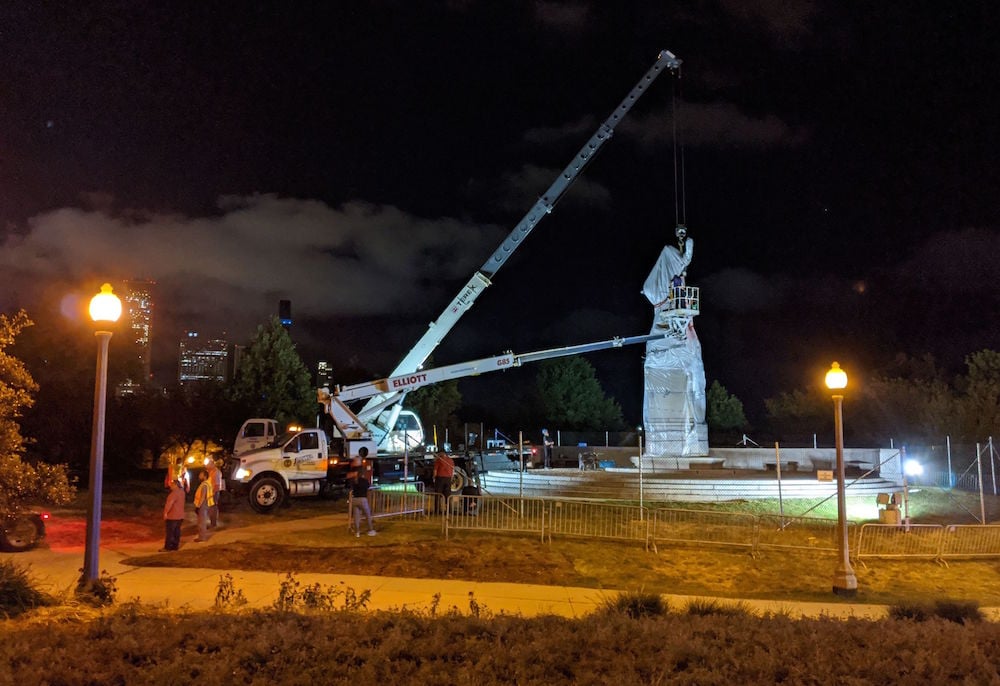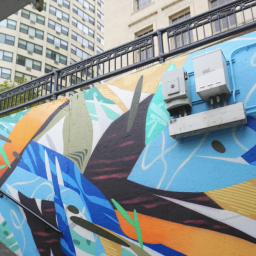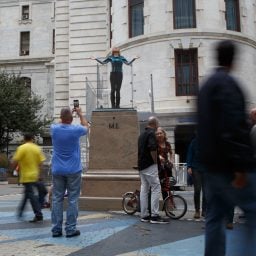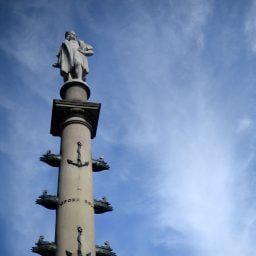Following the temporary removal of Christopher Columbus statues from public parks in Chicago, mayor Lori Lightfoot outlined a more comprehensive plan to review the fates of the city’s most controversial public art monuments.
The new initiative is part of “a racial healing and historical reckoning project” to assess the memorials, monuments, and other art across the city, Lightfoot said in a statement on Wednesday. “The project will grapple with the often unacknowledged—or forgotten—history associated with the city’s various municipal art collections, and will provide a vehicle to address the hard truths of Chicago’s racial history.”
Similar measures are being put in place all over the country amid ongoing calls for racial justice. Late last month, San Francisco city officials began reviewing statues and monuments to questionable figures. In June, New York City mayor Bill De Blasio announced the formation of the Racial Justice and Reconciliation Commission, which will look at monuments as part of its broader mandate.
In Chicago, the advisory committee will prioritize reviewing artworks that may be problematic. A representative for Lightfoot’s office told Artnet News that they plan to release details on the full advisory committee by the end of the month. The committee’s assembly will be co-chaired by Mark Kelly, cultural affairs department commissioner; Bonnie McDonald, president and CEO of Landmarks Illinois; and Jennifer Scott, director and chief curator of Jane Addams Hull-House Museum. In addition to the co-chairs, the committee will be comprised of artists, historians, and elected officials from around Chicago.
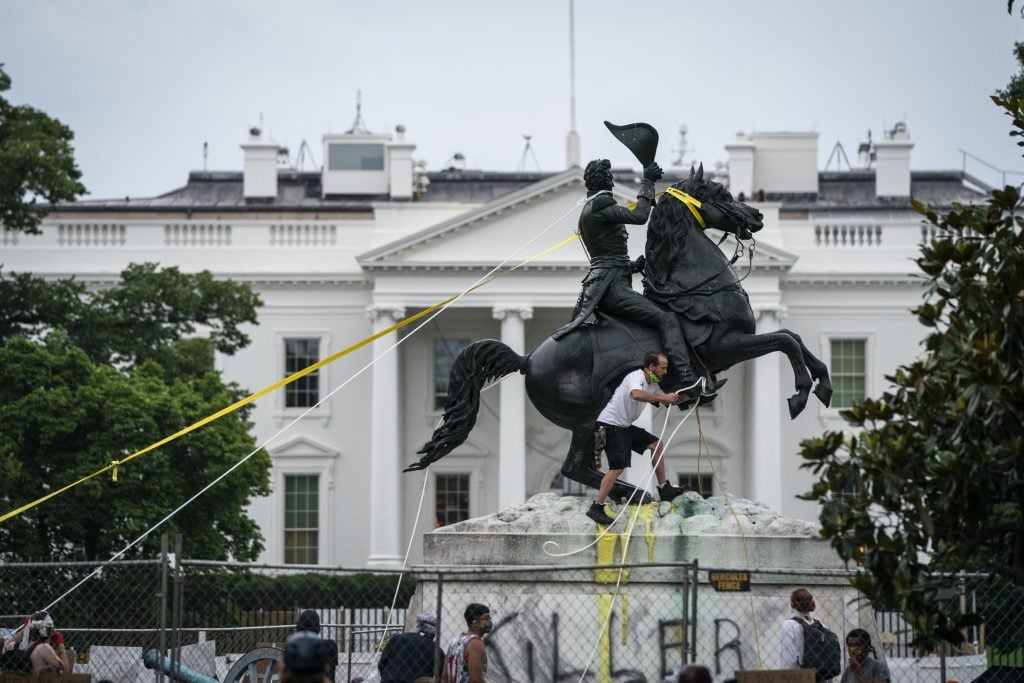
Protesters attempt to pull down the statue of Andrew Jackson in Lafayette Square near the White House on June 22, 2020, in Washington, DC. Police stopped them using pepper spray. Photo by Drew Angerer/Getty Images.
The project has four main objectives: cataloguing monuments and public art on city property; appointing an advisory committee to determine which pieces warrant action; making recommendations on any new monuments or public art that could be commissioned; and creating a platform for the public to engage in dialogue about Chicago’s history.
“I applaud the proposal for a thorough assessment of public art in Chicago that opens the door to both removing and creating,” said Kate Masur, associate professor of history at Northwestern University and co-author of the National Park Service’s “Theme Study on Reconstruction,” in an email to Artnet News.
“Chicagoans should indeed be talking about taking down public memorials and monuments that don’t reflect community values and also adding new works that honor people, events, and ideas that have previously been marginalized or publicly forgotten,” Masur added.
In announcing the news, Lightfoot called it a first step in a long-needed process, adding that the effort “is not just about a single statue or mural, but how we create a platform to channel our city’s dynamic civic energy to purposefully reflect our values as Chicagoans.”
Further, the city will also commission a series of temporary public artworks that focus on a broader range of topics, such as inequality and racial reconciliation, with development slated to begin soon.
Masur said the entire process should be “as inclusive as possible” and added that the committee should also consider somber memorials to events and forces that are now collectively condemned, “including settler colonialism and white supremacy.” She added: “Public art is always about power—who has the power to decide what is remembered in public spaces.”
As for New York City, Mayor De Blasio said he modeled the formation of the new commission on South Africa’s post-apartheid Truth and Reconciliation Commission. A representative for the mayor’s office told Artnet News that members and leaders will be named in the coming weeks.
“The commission will unpack the history of racism in New York City. We will learn about figures throughout our history for better or worse and about figures whose stories were never fully told or purposefully hidden,” the representative said “We are not being prescriptive with what actions the commission will ultimately call for.”
